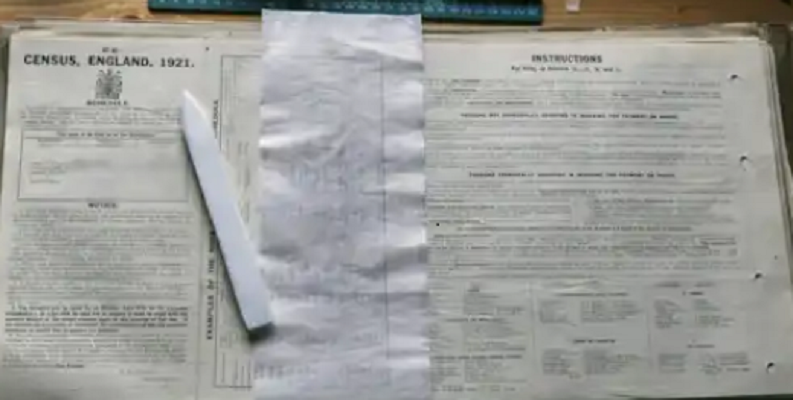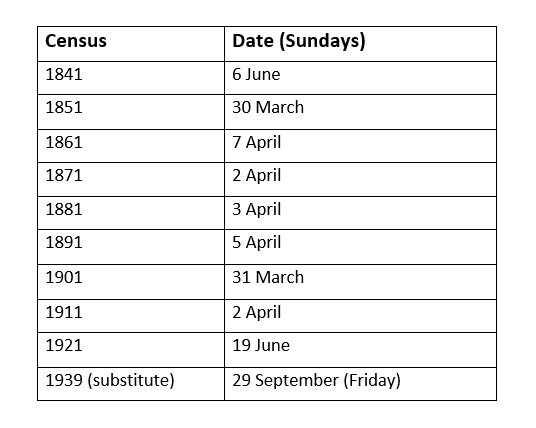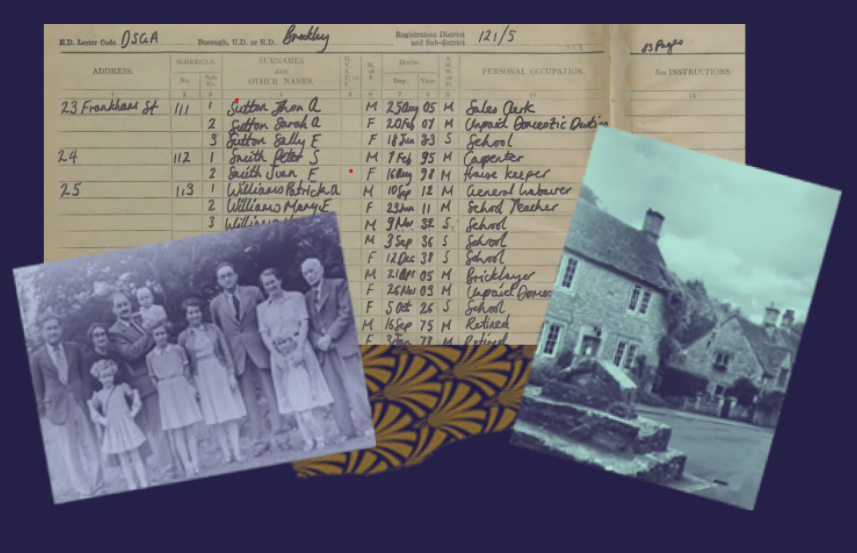The 1921 Census for England and Wales: a major interwar document
By Stephanie Ryan, Research Librarian, Information and Client Services | 5 January 2022
The 1921 Census, of England and Wales will be released on 6 January 2022, on the Findmypast database, and is the latest in a series of British censuses to become available. Censuses, or population counts, were taken in Britain every 10 years from 1801 but only those from 1841 are available beyond a fragmentary form. Each census increased the information available about individuals, families, even local areas and institutions, and also indirectly reflected concerns of the time.

When the census was taken
Censuses were taken on a Sunday because it was assumed most people were likely to be at home. They usually occurred at the end of March or early April. An exception was in 1921 because of an industrial strike. The June date selected was not ideal because some people would have already commenced summer holidays and so would not have been in their usual place of residence. Seaside places recorded a higher population than would have been usually expected in the census. In other words, some people had not permanently moved, but gone on holiday. If the census had been later, it would have overlapped with the traditionally popular holiday period in July-August and industrial holidays, so the June date was a compromise.

Importance of the 1921 census
The 1921 census is important for several reasons. It provides an update on people in the 1911 census, included new individuals and families, and affords an insight into those affected by World War 1 and the 1919 flu pandemic. In some cases, there are questions about who survived these events and where they were. As the census was recorded house by house and street by street in an area, it is possible to search by address and to find changes in the local area over time. It is not only the major interwar census but also the last publicly available census until the release of the 1951 census. The 1931 census was destroyed in a fire during, but unrelated to, World War 2. The 1941 census was cancelled because of World War 2 disruption. There is however the 1939 Register, taken on the cusp of World War 2 in September 1939, a very useful census substitute to which detail was added until the 1950s and it was the basis for the UK national identity card during World War 2.

New questions on the 1921 Census
New information required reflected the social concerns of the time and included:
- the provision of divorce in marital status
- questions about orphan status to determine if either parent was alive and who it was
- number of dependants aged under 16 years, regardless of address, intended for married men, widows and widowers only
- whether education was full or part time
- name and details of employer
- if unemployed, name of last employer was required along with the annotation ‘out of work’
- place of work: ‘no fixed place’ or ‘at home’
Availability and cost of the 1921 Census
It will be possible to search the index of the 1921 census only on Findmypast, at this stage, and without cost. While Findmypast is available at State Library there will be charges in the foreseeable future:
- each transcription which will cost A$4.80
- each original record image which will cost A$6.60
It will not be possible to purchase these documents via a library account. State Library staff will not be able to access them on your behalf using the State Library option. It will be essential for you to use a personal account and to be able to pay electronically. The charges are intended to recoup the cost of digitising and transcribing the 18,235,242 images created from the records for which Findmypast won the exclusive contract from The National Archives UK. This census covers 38 million lives in 1.6 kilometres of paper records on linear shelving. It has been recorded in 1.4 petabytes of space over three years.
However, it will be possible to search and view the digital 1921 census at The National Archives UK, Kew, England, onsite only, without charge.
Scotland and Northern Ireland
Scotland took its own 1921 Census. It will be released in the latter half of 1922 as indexed images via Scotland’s People which is where other important Scottish databases are located. The census in Ireland and Northern Ireland were not conducted until 1926 because of the Irish War of Independence.
Any other option?
The 1939 register may be more appropriate for those researching individuals and families and, in particular, English migrants to Australia post World War 2. It provides a snapshot of the population at the outbreak of World War 2, shows changes in occupation and in the case of women, altered marital status. Findmypast also won the contract for digitising that document. The blog Findmypast calls the 1939 Register "one of the most important documents in 20th century Britain,” compares it to the English and Welsh censuses and explores its value. All transcriptions and document images are available for both personal and library accounts.
Find out more....
Check The National Archives UK guide on census records. The Archives holds the original censuses and its guide includes an overview of what is covered in each census, how ships and institutions were included, and abbreviations used.
Findmypast has Everything you need to know about UK census records. Scroll to the bottom to link to its various programs on the censuses including one on YouTube showing how Findmypast brought the 1921 census online. Findmypast will reveal more closer to the release date.
Comments
Your email address will not be published.
We welcome relevant, respectful comments.